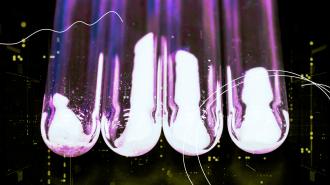Using AI and cloud computing, Microsoft was able to identify promising new battery materials for the Department of Energy (DoE) — in a fraction of the time it would usually take.
The challenge: Batteries are an essential part of the clean energy future. We need them to power electric vehicles and to store energy from solar and wind.
Currently, lithium-ion batteries are our best option for both of these uses, but they aren’t ideal. Because lithium is relatively scarce, it’s also expensive, and the metal is often unethically mined using child labor and environmentally destructive processes.
“Something that could have taken years, we did in two weeks.”
Jason Zander
Identifying better battery materials is a time-consuming process, though.
“It’s always trial and error,” Vijay Murugesan, head of the Material Sciences Group at the DoE’s Pacific Northwest National Laboratory (PNNL), told Fast Company.
“Something comes up in my dreams or the shower, and then I come in and spend two years testing whether it works or not, and then you go back and do that cycle again for a decade,” he continued. “The success rate is not that great, to be honest.”
What’s new? To speed up that process, PNNL teamed up with Microsoft.
Using a combination of AI models and cloud computing, the tech giant simulated potential chemical combinations for batteries, starting from a list of 32.6 million materials. Within just 80 hours, it had identified 18 promising candidates for new battery materials.
“Something that could have taken years, we did in two weeks,” Jason Zander, an executive VP at Microsoft, told Reuters.
Looking ahead: PNNL scientists have already synthesized one of the candidate battery materials for testing — if it performs well, it could enable production of batteries containing 70% less lithium.
They also expect Microsoft’s technology to lead to the discovery of far more than just new battery materials.
“That’s the part we’re most excited about … We just picked one problem,” said Zander. “There are thousands of problems to go solve, and it’s applicable to all of them.”
We’d love to hear from you! If you have a comment about this article or if you have a tip for a future Freethink story, please email us at [email protected].






